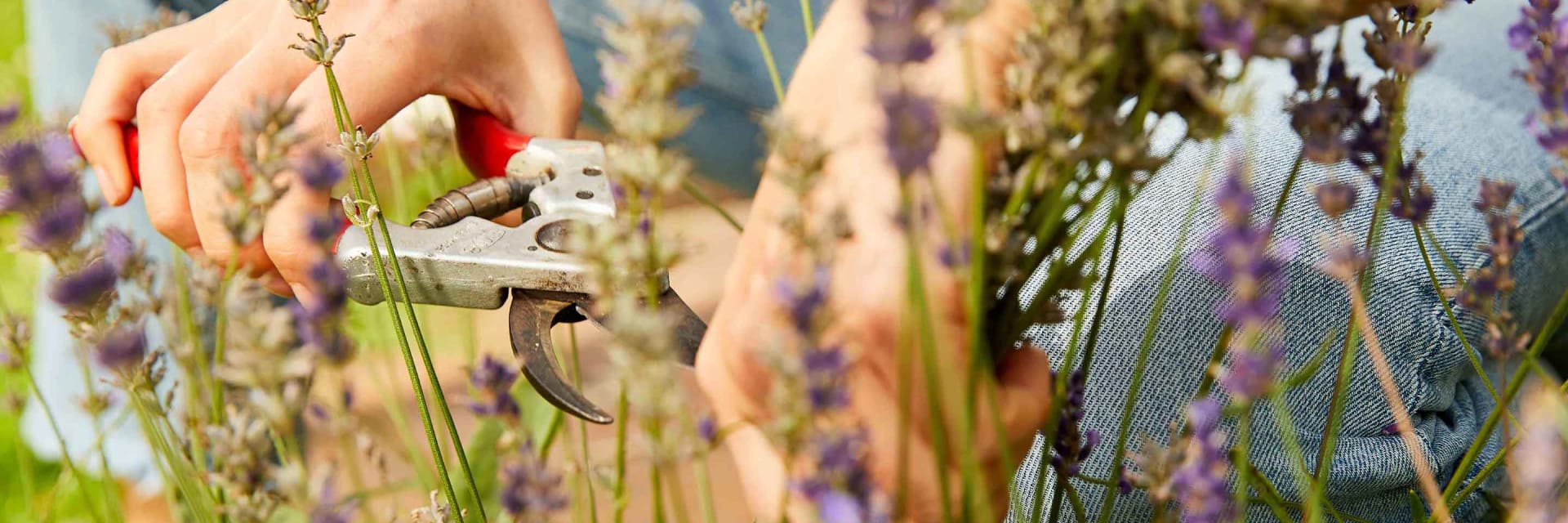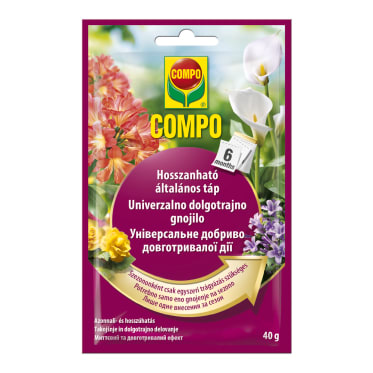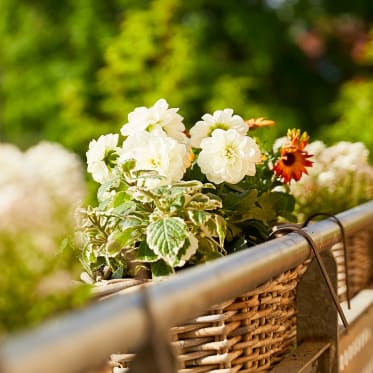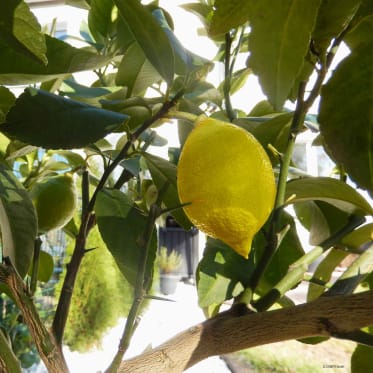Frequent search terms

- COMPO
- Guide
- Plant Care
- Balcony and potted plants
- Cutting lavender
Cutting lavender
We all love lavender just as much as bees, bumblebees and butterflies do. In fact, you can detect this Mediterranean semi-shrub's distinctive scent in lots of gardens. But not every lavender bush is laden with masses of flowers – and this can be because it wasn't cut back. In this article, you'll learn why this is an essential part of your lavender care plan and the best way to do it.
Material and size are key
Why should you cut lavender?
There are many reasons to give your lavender an annual trim. This semi-shrub tends to turn quite woody with age and new shoots don't form on the woody parts, resulting in parts of the lavender with hardly any flowers or leaves. In the worst-case scenario, your lavender will even split down the middle. If that happens, it's very hard to salvage the plant.
Another reason for regular pruning is to keep the plant in shape – which is particularly handy for smaller lavender plants in containers.

When should you to cut lavender?
You should cut your lavender twice a year to provide it with the best possible care. Lavender's first trim should take place in late February to mid-March, provided you're not expecting any more heavy frosts. You can tell when to give it its second cut because almost all its flowers will have died back. Generally, this happens in July or August.
Unlike many shrubs, it's not advisable to cut this violet semi-shrub back in autumn – if you do, you're leaving the plant at risk of serious frost damage.
Cutting lavender in February and March
Cutting back in the spring
The most important point at which to cut lavender is in spring. The perfect time is before the plant is in bud but after any lasting frost. So, if you're experiencing a long, cold winter, wait a little before you cut it back. During this maintenance cut, you can trim off around two-thirds of this Mediterranean beauty. In so doing, you can remove any parts of the plant that dried out or froze over winter. Cut off these branches just above the ground.
Incidentally, the later a lavender is cut, the later it'll reveal its pretty flowers. In other words, if you've planted it in conjunction with lots of late summer flowers, it can make sense to wait until February's over before cutting your lavender.
Cutting lavender in July and August
Maintenance cut for a second flowering period
Giving your lavender the right cut in summer doesn't just conserve its energies, it also lets it create a good number of new flower heads. Why? Because if you cut the branch just before the flowers die back, your lavender won't expend masses of energy on making seeds. Instead, it can focus on making new flowers. Use your garden shears on particularly long shoots, cutting back the plant by about a third. If you forget to give your lavender its summer trim, you're best off not trying to squeeze it in at a later date, as this is really only an additional maintenance cut. Your lavender needs to be able to form new shoots before the first frost arrives so it doesn't get damaged.
The two-thirds, one-third rule.
This rule is an easy way to remember how much to cut back your lavender. Remove no more than two-thirds in the spring and around one-third in the summer.

Tips for the perfect cut
Generally speaking, a different approach is needed when pruning young lavender plants as compared to older ones. For example, while younger ones will withstand a rigorous pruning, you need to exercise more care with older lavender plants because of their ligneous parts. This Mediterranean semi-shrub can only grow new shoots from these spots with a great deal of effort, if at all. So, be careful not to cut into the old wood and always leave a couple of centimetres of the new shoots.
If your lavender hasn't been cut for several years, a rigorous trim is the only way to rescue your woody lavender. It's not always a successful strategy, but it's certainly worth a try! Ideally, give your lavender a trim in June or July, cutting the plant back thoroughly until it's 10 to 15 cm tall in the process. If you're lucky, it'll start growing fresh shoots before the year is out.
Tools for a clean cut
For young lavender plants, you're best opting for rose shears. But in the case of older plants, it's advisable to reach for a pair of hedge clippers.
Cutting lavender for drying
Lavender doesn't just look great – its scented flowers have other benefits, too. On the one hand, lavender has a calming effect, and on the other, its scent repels midges and other insects. Accordingly, this Mediterranean semi-shrub is perfect for use in crafting and creating your own home-made lavender products, such as scented candles. Most sets of instructions start by drying the lavender you'll be using. Ideally, you can pick your lavender for drying in mid-June when some of its flowers have already opened and others are just about to open. To do so, cut the shoots around 10 cm below the flowers. After that, tie the twigs together into a little bouquet and hang them upside down to dry.
Products for caring for lavender
You might also be interested in












